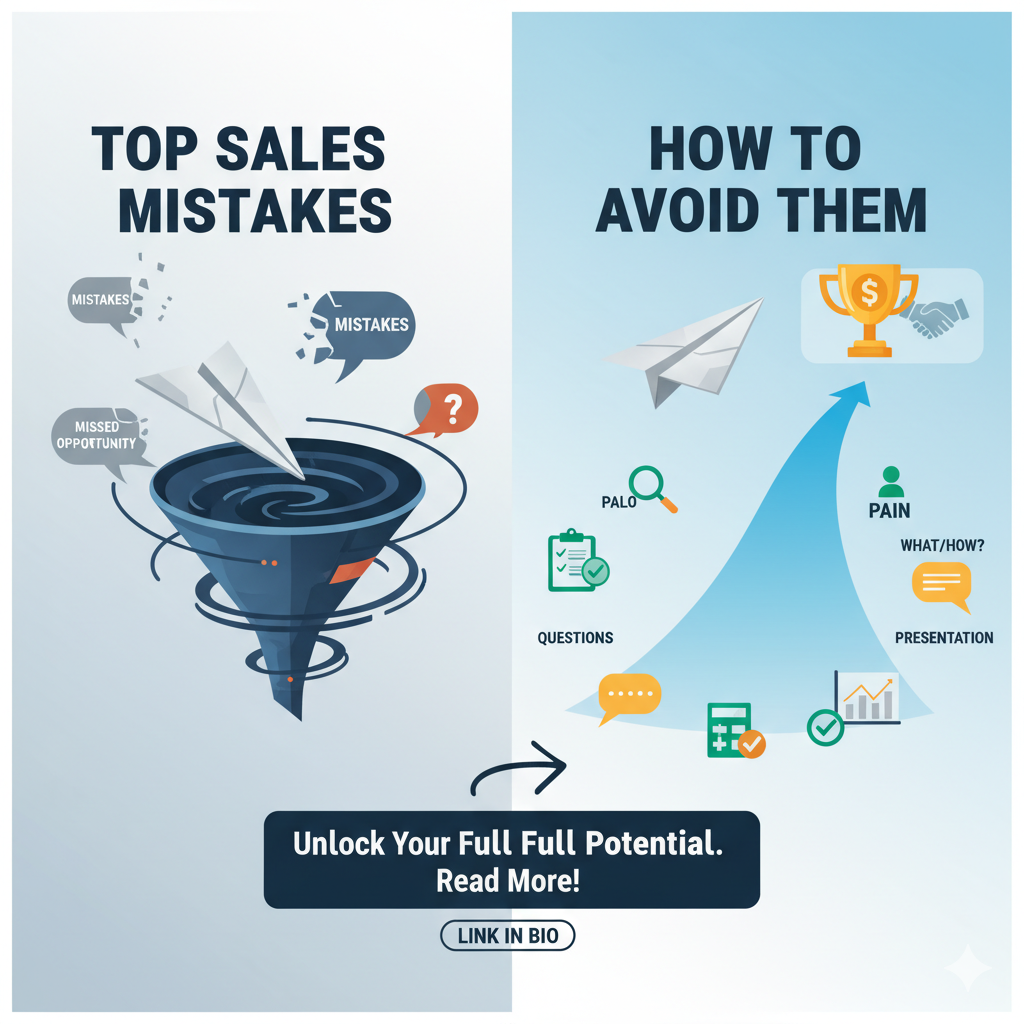Top Sales Mistakes and How to Avoid Them

Uncover the Most Common Sales Mistakes and How to Correct Them
In the high-stakes world of sales, even seasoned professionals can stumble. Understanding and correcting common sales mistakes can significantly enhance your approach, build stronger client relationships, and close more deals. Here, we delve into crucial steps such as maintaining a strong PALO (Purpose, Agenda, Logistics, Outcome), staying in the pain funnel, asking the right questions, handling the budget step effectively, and delivering a focused presentation.
Maintaining a Strong PALO: Setting the Foundation for Success
The cornerstone of a successful sales process is a robust PALO. This involves setting clear expectations and ensuring that both you and your client are on the same page from the start. A weak PALO can lead to misunderstandings and missed opportunities. Begin by clearly outlining the meeting's Purpose, understanding your client's Agenda, setting the Logistics, and agreeing on the Outcome. This helps to build trust and sets the stage for a productive conversation.
Staying in the Pain Funnel: Understanding Client Needs Deeply
One of the most critical mistakes sales professionals make is not spending enough time in the pain funnel. It's essential to dig deep into the client's problems to understand their needs genuinely. Rushing this step can result in missing vital information that could be pivotal in closing the deal. Use the pain funnel to explore the 'what,' 'why,' and 'how' of the client's issues. This not only builds empathy but also positions you as a problem-solver, ready to provide tailored solutions.
Asking the Right Questions: Guiding the Conversation Effectively
The questions you ask can make or break your sales process. Often, salespeople fall into the trap of asking closed questions that do not elicit detailed responses. Instead, focus on open-ended questions that start with 'what' and 'how.' These questions encourage clients to share more about their needs and challenges, providing you with invaluable insights. Avoid 'why' and 'when' questions as they can put clients on the defensive, hindering open communication.
Handling the Budget Step: Navigating Financial Discussions with Ease
Discussing budget can be a daunting part of the sales process. Many sales professionals either avoid this step or handle it poorly by giving numbers prematurely. The key is to engage the client in a conversation about their financial comfort zone without anchoring to a specific price. Ask them about their budget in an open and non-confrontational manner. For instance, say, "Let's pretend I said the project would cost $1,000,000. Is that within your expectations?" This approach helps to gauge their budget while keeping the conversation fluid and pressure-free.
Delivering a Focused Presentation: Ensuring Clear and Relevant Communication
A successful presentation should be a confirmation of the client's needs and your proposed solutions, not an overwhelming deluge of information. Tailor your presentation to address the pains and impacts discussed previously within the agreed-upon budget. Introducing new information at this stage can confuse the client and derail the process. Remember, the best presentations are concise, relevant, and directly tied to the needs you've uncovered.
By focusing on these key areas, sales professionals can refine their approach, foster trust, and ultimately close more deals. Avoiding these common mistakes not only enhances your sales effectiveness but also builds stronger, more enduring client relationships.


